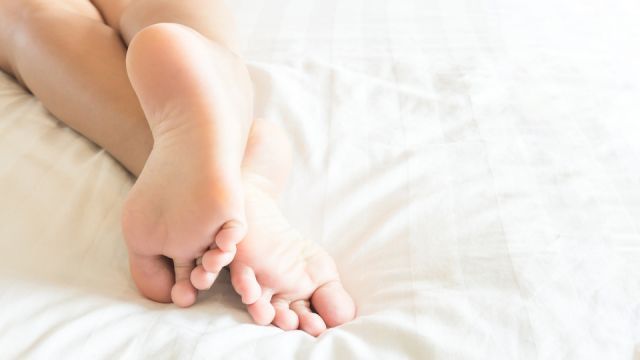
Do you have flat feet? Basically, this means that you don’t have a normal arch when you are standing. Go ahead, take a peek, what do you see? Flat feet, also known as pes planus or fallen arches are generally seen in infants but usually go away by age 2 or 3 as the ligaments and tendons in the feet and leg tighten. However, it can last into adulthood and also be caused by injuries or illness.
Although many people with flat feet feel no pain, the condition can be painful and cause problems when walking, running, or standing for long periods of time. There is not much that can be done to reverse the condition, but there are a few things that can be done to make it more tolerable and reduce the pain and inflammation.
The flat foot test
If you are not sure if you have flat feet you can perform this simple exercise:
- Wet your feet
- Stand on a flat surface where you can see your footprint.
- Take a look at your footprint. If you can see a complete imprint of the bottom of your foot, you likely have flat feet.
There is more than one type of flat foot
There are several different types of flat feet, including:
- Flexible Flat Foot – This is the most common type of flat foot seen in children. The arches in your foot appear only when the foot is lifted off the ground. The soles of the foot touch the ground completely when placed flat.
- Short Achilles Tendon – If the Achilles tendon, which connects the heel bone to the calf muscle, is too short, it can result in flat feet and pain when running and walking.
- Posterior Tibial Tendon Dysfunction – The posterior tibial tendon is a supporting structure in the foot that helps with walking. If there is a change in the tendon, it can interfere with arch support and cause the foot to flatten. If not caught early, this condition will continue to worsen over time. Overuse of the tibial tendon from activities such as walking, hiking, running, or climbing stairs is usually the root cause of this condition.
Make sure that you are wearing proper footwear
First and foremost, it is crucial that you are wearing supportive footwear. Although wearing good shoes may not solve your flat foot problem, it will keep it from worsening. In addition to good shoes, it may be necessary to be fitted for orthotic inserts which provide additional support for flat feet. Also, wide shoes often offer more support than narrow shoes.
Other things to consider:
Lifestyle changes – Eating an anti-inflammatory diet can help to reduce swelling and pain. In addition, maintaining a healthy weight can also help take the pressure off of your feet.
Stretches- There are a number of different stretches that can be done to help improve the strength and flexibility of your ankles which support your feet. The golf ball roll is a popular and effective exercise that is easy to do. Sit on a chair with your feet on the ground. Put a golf ball under your foot and roll it forward and back under the arch of your foot for 2 minutes This stretches the plantar fascia ligament
Go barefoot – Although it may seem counterintuitive, going barefoot trains the muscles in the foot to become active and grow stronger. When this happens, there is better stabilization of the foot.
Rest, Ice, and elevation – Many people with flat feet find that they get relief from pain and swelling by getting off their feet, applying an ice pack and elevating their legs. This is especially important if you have a job that requires you to be on our feet for long periods.
-The Alternative Daily

